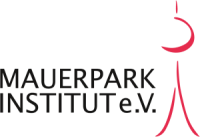The goal of Mauerpark Institute’s work on gender issues is to strive for increased gender equity. We consider gender to be the socially and culturally constructed identities, attributes, expectations, roles and relationships associated with performing female, male or other gendered roles in a particular cultural, economic, social and time context. Gender roles are therefore not merely ‘natural’ and unchanging but contingent upon a range of factors, such as class and age. As they relate to each other power dynamics depending on culturally depending values and norms shape the way we interact.
Gender roles are shaped and influenced by cultural beliefs and power dynamics within society. Factors such as sex, age, social status religious beliefs, sexual orientation, ethnic origin and political views influence how these roles are shaped and consequently access to opportunities, social services, justice but also possible vulnerabilities. Gender roles therefore also depend on how people in a given society relate to each other, define and value different characteristics. This is a highly dynamic and multidimensional process that can be shaped by a variety of factors.
During times of armed conflict gender roles and power dynamics may change or are reinforced or eliminated violently. In order to strengthen sustainable peace, as well as fair and inclusive participation of all members of society to participate free and safely in public and private spheres such gendered dynamics need to be identified and based on the protection of human rights for all as well as human development principles.
The Mauerpark Institute recognize the need to support efforts in a variety of thematic areas including but not limited to:
- Peacekeeping missions supporting gender equality and human security principles
Peace support operations have moved from being merely military interventions to missions supporting the reconstruction of local infrastructure and institutions after an armed conflict. The protection of women, men, boys and girls considering their different needs and opportunities has become an integral part of almost all current mission mandates. Gender training for peacekeeping personnel, the establishment of gender units a network of gender focal points, an increased gender balance among staff as well as a zero tolerance policy shall contribute to more gender friendly peacekeeping missions in conflict areas.
The implementation of women, peace and security policies (such as UNSCR 1325, 1820, 1888 etc.)
Over the past 16 years a number of policies and provisions have contributed to more awareness, political will and monitoring frameworks at the national, regional and international level.
CEDAW and the Beijing Platform of Action, as well as regional human rights treaties, contain specific references to protect women’s rights in armed conflict. The international criminal tribunals as well as the international criminal court contain specific legislation and jurisprudence to respond to sexual and gender based violence in armed conflict in a widespread and systematic manner when constituting crimes against humanity or war crimes.
The most specific provisions are outlined in the women, peace and security resolutions.
- Resolution 1325 (2000): This first women, peace and security resolution raised significant awareness about the need with respect to the full participation of women in peace processes, the protection of women in armed conflict and prevention of gender-based violence.
- Resolution 1820 (2008): This addressed sexual violence in conflict and post-conflict situations and asked the Secretary-General for a report by 30 June 2009 with information on the systematic use of sexual violence in conflict areas and proposals for strategies to minimize the prevalence of such acts with benchmarks for measuring progress.
- Resolution 1888 (2009): This resolution strengthened efforts to end sexual violence against women and children in armed conflict.
- Resolution 1889 (2009): This resolution urged member states, UN bodies, donors and civil society to ensure that women’s protection and empowerment is taken into account during post-conflict needs assessment and planning.
- Resolution 1960 (2010): This resolution established a monitoring, analysis and reporting mechanism on conflict-related sexual violence in situations on the Council’s agenda, and also called upon parties to armed conflict to make specific, time-bound commitments to prohibit and punish sexual violence and asked the Secretary-General to monitor those commitments.
- Resolution 2106 (2013): This resolution focused on accountability for perpetrators of sexual violence in conflict and stressing women’s political and economic empowerment.
- Resolution 2122 (2013): This resolution addressed the persistent gaps in the implementation of the women, peace and security agenda, as highlighted in the 2013 Secretary-General’s report.
- Resolution 2242 (2015): This resolution stands out due to its mentioning of the inclusion of a gender perspective into measures and initiatives to prevent and respond to terrorism and religious extremism. Furthermore, more financial and political support was requested from the Member States.
Security sector reform from a gender perspective
Security sector actors do not only include the military, police, justice sector, border management and prison personnel, but also parliamentarian representatives, policy makers, the media and unofficial armed actors. The inclusion of a gender perspective into the different areas working with the provision of security is especially but not limited to post-conflict societies. Different initiatives and activities, such as training for gender equality, the support of women networks within the different institutions as well as the strengthening of civil society actors who monitor the reform efforts from a gender perspective can form part of gender responsive security sector reform efforts.
Gender responsive peacebuilding
Peacebuilding constitute support activities and mechanisms towards sustainable peace, especially by civil society. A conflict analysis from a gender perspective can help to plan programmes and operations in a more specific manner so that they can respond to the different needs of the affected population in order to contribute to human development and sustainable peace for all. Peacebuilding programmes which include a gender dimension are more inclusive and comprehensive to achieve their objectives. These peacebuilding programmes often include a more equal participation of women and men in decision making processes, the protection of human rights, the specific economic empowerment of women, the protection from gender-based violence and prevention of armed conflict.
